Step-by-step guide to carrying out IVF on cows
A growing number of cattle breeders are using in vitro fertilisation (IVF) to maximise pregnancy rates.
This is the process of harvesting oocytes from donor cows, and creating embryos by fertilising the oocytes with semen in a petri dish.
The embryo is then implanted into a recipient (otherwise known as surrogate cow), or they can be frozen indefinitely.
See also: Embryo transfer ‘a faster way to boost beef herd genetics’
Cumbria-based Paragon Veterinary Group has seen embryo production increase at least six-fold in the since its Activf-ET programme began in 2013 and they explained how the process works.
Read the step-by-step guide to using IVF and case study at Trueman Limousins in County Down below.
How the procedure works
The first stage is the key addition to conventional embryo transfer. Eggs are removed from the donor cow’s ovary before the ovary naturally releases the oocyte down the fallopian tube.
Using a process called trans-vaginal recovery, IVF works by first removing the dominant follicle in the ovary, allowing the rest to grow.
In a normal pregnancy, the dominant follicle inhibits the rest – otherwise a cow could end up developing dozens of calves in the womb, she adds. With IVF, all follicles are left for six days to develop uninhibited within the ovary in a process called dominant follicle regression (DFR).
Ooctye development
1 Dominant follicle regression
The donor cow is given a local anaesthetic and cleaned with a mild disinfectant and saline solution. This can happen on the farm or at the Paragon facility.
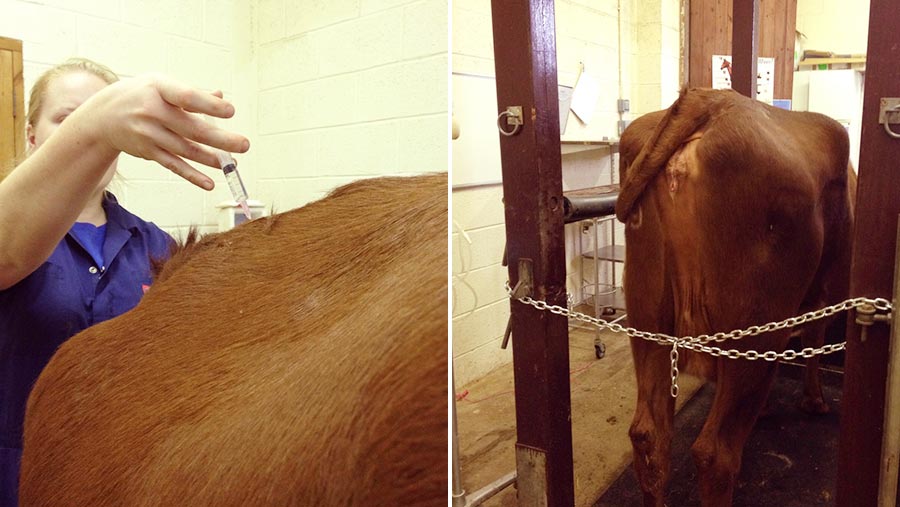
2 Ultrasound needle
An ultrasound-guided needle enters the ovary to remove the dominant follicle and stimulate super-ovulation.
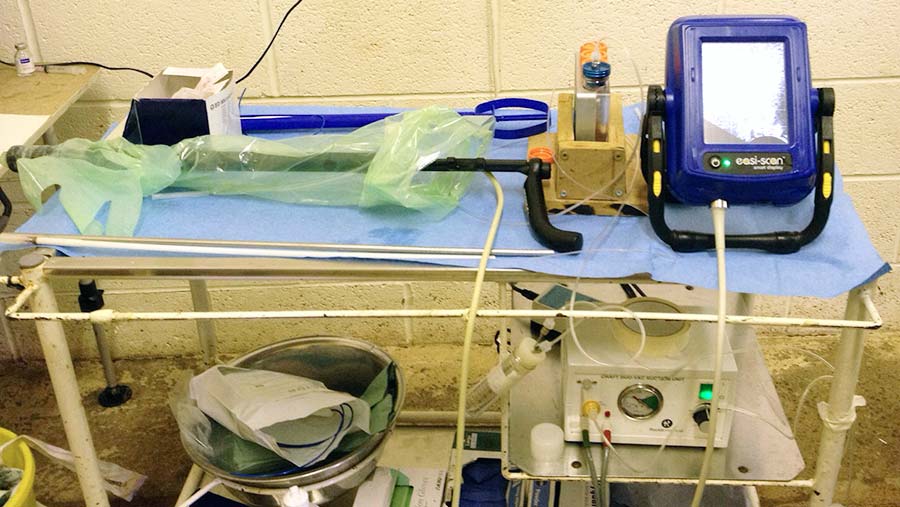
3 Super-ovulation
a three-day course of follicle stimulating hormones (FSH) is administered to stimulate ovaries to produce more oocytes.
Oocyte collection
4 Ovum pick-up (OPU)
The donor cow is brought into the crush collection facility, where the temperature is at 27-32C. Oocytes are harvested via trans-vaginal recovery, averaging 10 eggs per collection, and the eggs are matured for 20 hours.
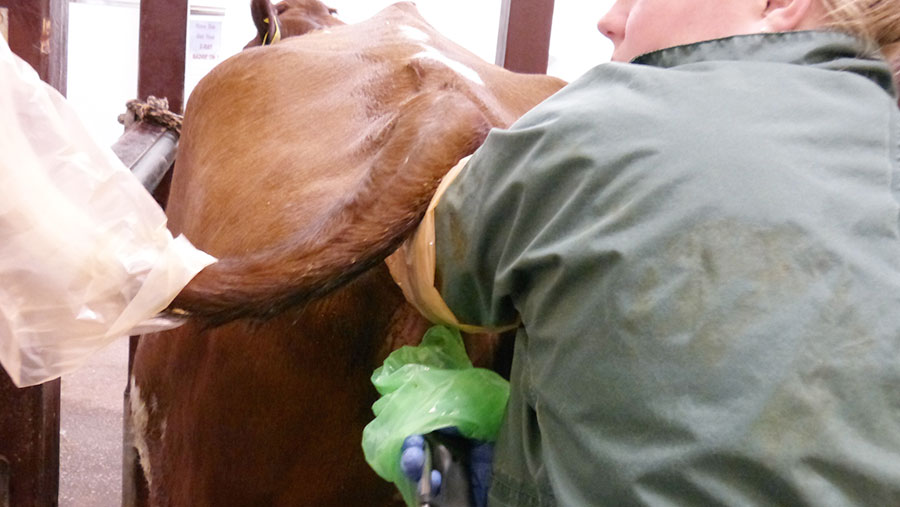
5 Insulated chambers
Eggs are placed into insulated chambers at 37C to mimic a cow’s body temperature.
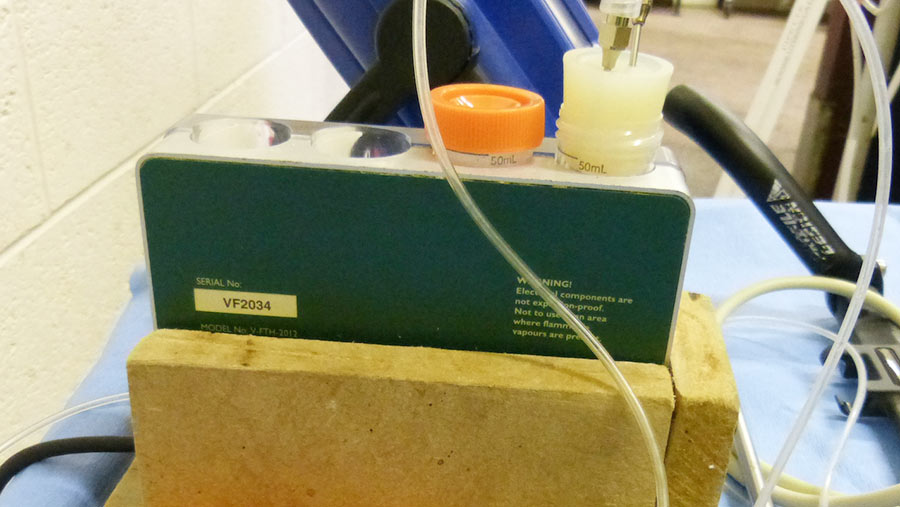
Fertilisation
6 Fertilisation occurs with semen
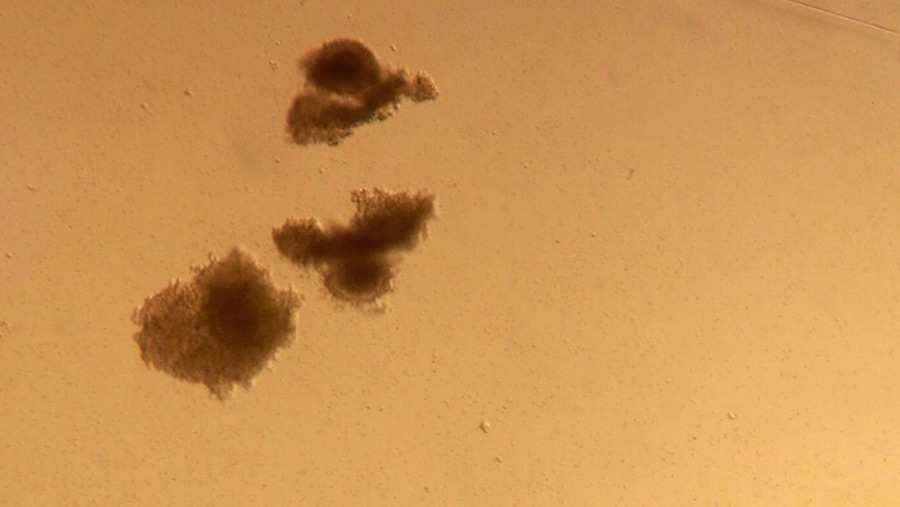
7 Embryos
Resulting embryos are matured for a week in the laboratory, passing through eight different maturation liquids (medias) mimicking the changing pH and gas levels inside the uterus.
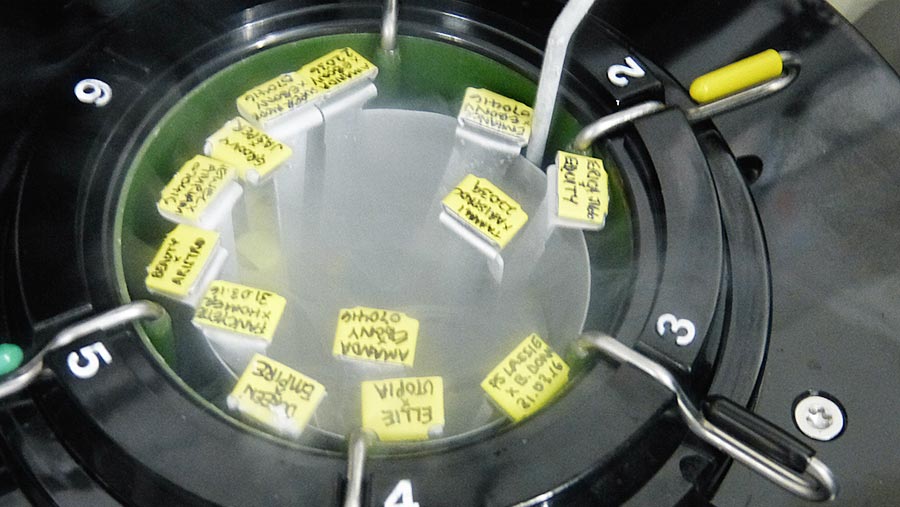
8 Embryos can be transferred directly or frozen indefinitely
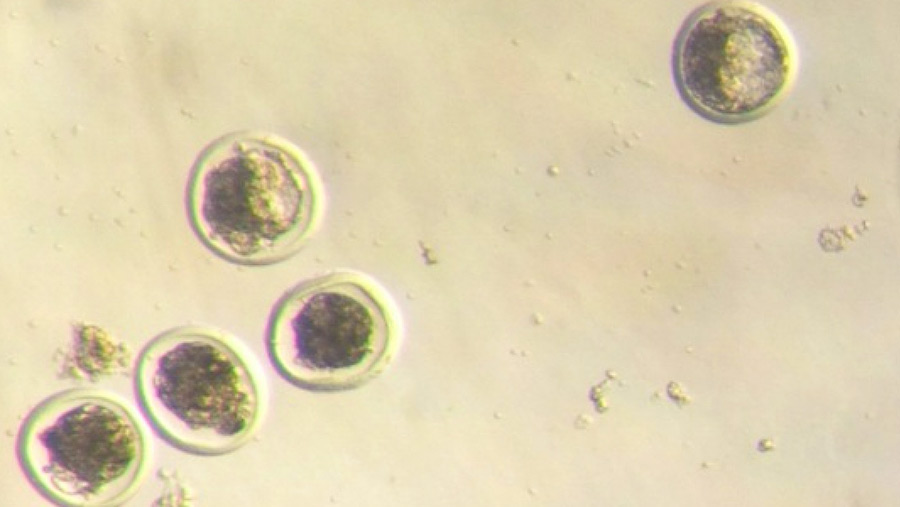
Recipient and donor management advice
|
General guidelines |
Recipient cow or heifer |
|
Cows
Maiden heifers
|
IVF stages – fortnight timelines
|
Donor cow |
Laboratory |
Recipient cow |
||||
|
Day 1 |
Day 2 to 6 |
Day 7 |
Day 7/8 |
Day 8 |
Day 8 to 15 |
Day 15 |
|
DFR |
Superovulation after three-day FSH course |
OPU |
Egg maturation 20-24 hours |
Fertilisation |
Maturation in incubator |
Must be used within 24 hours if fresh in cow seven days after heat |
Benefits of using IVF
- 50% of usual amount of semen needed. Half a straw can inseminate around six or seven donors
- About 10 eggs per collection. About 73% of these will be fertilised
- Then 43% will become a viable and freezable
- Fresh pregnancy rate = 58%
- Frozen pregnancy rate = 57%
Breeding benefits
Problem breeders can be salvaged because they can be used as a donor if, for example, they have:
- Uterine damage
- Fallopian tubes blocked
- Scarring
Extend breeding life:
- Collection possible from 10 months to 20 years old and above
- Ovaries can be recovered from abattoir
Case study: Henry Savage, Trueman Limousins, Altnamackin, County Down
At Trueman Limousins, where a 70% pregnancy rate is the target for heifers, success with IVF and conventional embryo transfer work hinges on diligence around three key areas – condition, nutrition and regime.
- Condition: Heifers must be well-fleshed but not too fat. Too much weight is an “uphill struggle” and should mean heifers are ruled out of embryo transfer work. With reference to fatness classifications on the Europ grid, Mr Savage targets 3s.
- Nutrition: Energy levels must be kept high, with no sudden changes in diet in the two months leading up to oocyte collection and embryo transfer.
- Regime: Quality semen must be used, and optimum care taken of semen and embryos to maximise conception.
IVF contenders must be mature cows with calves on the ground of exceptionally high genetic merit that may be experiencing breeding difficulties, explains Mr Savage.
Two cows have been through the IVF process successfully so far – a 16-year-old, from which three calves were produced, and a six-year old with a retained membrane, which produced four calves via IVF.
This summer a third dam is being put forward. She had a mummified calf inside her, of which only three-quarters was removed.
IVF nutrition: supplementing grass/silage in summer/winter
Donors: five weeks out
- Flax oil: 50-60ml daily
- Dried sugar beet: 1-1.5kg a head a day
- High-energy/low-protein pre-calving nuts (40-50% maize, 14%CP): 1-1.5kg a head a day
- Pre-calving minerals. Mixed with sugar beet and pellets or placed on to silage
Recipients: six to seven weeks after transfer
- Broadly the same protocol
- One difference is that double the amount of flax oil is used (100ml a head a day)
- Cows are scanned at seven weeks and then transitioned on to standard heifer diet if pregnant.
“We focus on energy levels and a rising plane of nutrition,” Mr Savage says. “We have a regime we think works and we wouldn’t change it. We achieved five pregnancies from seven embryos with our last recipients and generally find higher success rates with heifers, while cows, as you would expect, might manage 50% success.
“Semen quality is hugely important and the number of times the straw goes in and out of liquid nitrogen has an effect, as does having older semen – there are so many variables.
“I’m investing in a new turner for the farm this year and this is mainly because I want to produce better-quality dry silage to support cow condition and improve fertility.”
